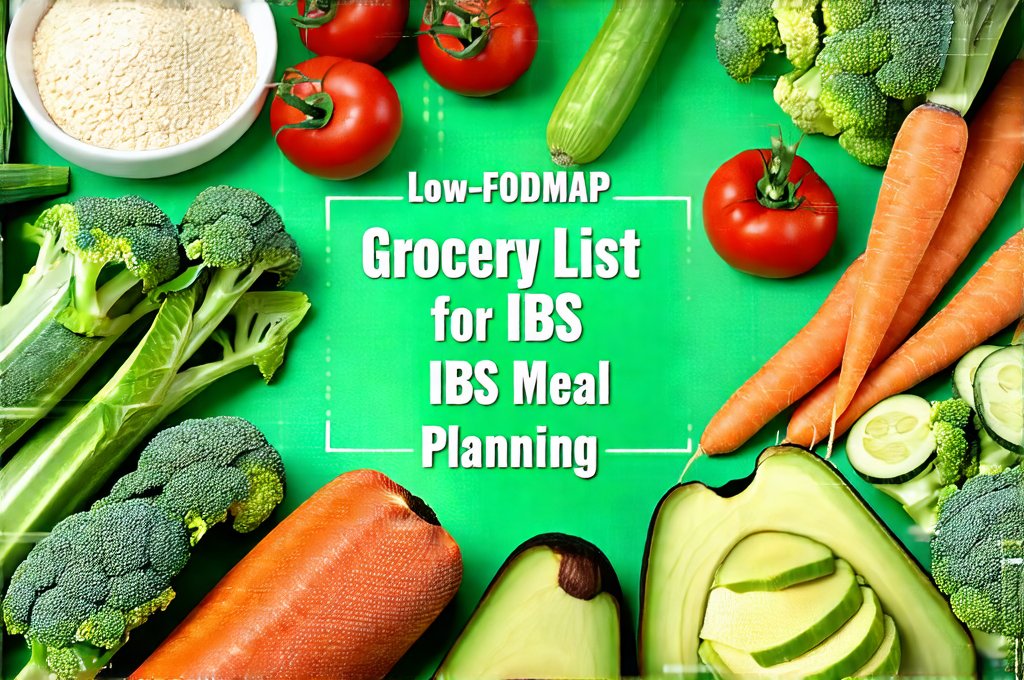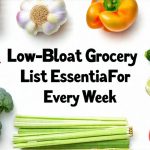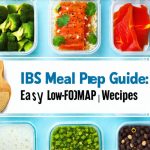Irritable Bowel Syndrome (IBS) impacts millions worldwide, often leading to uncomfortable digestive symptoms like bloating, gas, abdominal pain, diarrhea, and constipation. While there’s no single cure-all for IBS, dietary adjustments can significantly manage these symptoms. The low-FODMAP diet has emerged as a highly effective strategy for many individuals with IBS, focusing on reducing fermentable carbohydrates that can trigger digestive distress. This isn’t about elimination forever; it’s a process of identifying triggers and building a sustainable eating pattern tailored to your individual needs. Understanding what FODMAP stands for – Fermentable Oligosaccharides, Disaccharides, Monosaccharides, And Polyols – is the first step toward taking control of your digestive health.
Navigating the grocery store with IBS can feel daunting, but it doesn’t have to be. Many delicious and nutritious foods are low-FODMAP friendly, and a well-planned shopping list makes all the difference. This guide will provide a comprehensive low-FODMAP grocery list, categorized for easier planning, along with tips for incorporating these foods into IBS-friendly meal plans. Remember that individual tolerance levels vary, so it’s essential to listen to your body and work with a registered dietitian or healthcare professional to personalize your diet. The goal is not deprivation but rather finding what works best for you. Consider starting with meal planning to ease the process.
Building Your Low-FODMAP Pantry: Staples & Essentials
A well-stocked pantry forms the foundation of any successful low-FODMAP diet. Focus on building blocks like grains, proteins, and healthy fats that offer versatility for meal creation. Rice, quinoa, oats (in moderation – check portion sizes!), and gluten-free bread are excellent carbohydrate sources. Protein options should lean towards poultry, fish, beef, pork, eggs, and firm tofu. For healthy fats, incorporate olive oil, avocado oil, nuts (almonds in small portions, macadamia nuts), and seeds (chia seeds, flaxseeds). Don’t underestimate the power of spices! Many are naturally low-FODMAP and can add incredible flavor to your meals – think ginger, turmeric, cumin, coriander, and oregano.
Beyond these basics, stock up on lactose-free dairy alternatives like almond milk or coconut yogurt. These provide calcium and other essential nutrients without triggering symptoms in those sensitive to lactose. Look for products specifically labeled “low-FODMAP” where available, but always double-check the ingredients list, as formulations can change. Consider investing in a good quality bouillon cube (ensure low FODMAP) for flavourful stocks and soups. The key is to have readily available ingredients that allow you to quickly whip up healthy, gut-friendly meals. For those with chronic conditions, long-term planning can be incredibly beneficial.
Understanding Portion Sizes & Hidden FODMAPs
Portion control is crucial on the low-FODMAP diet, even with foods generally considered safe. For example, while bananas are often avoided, a small unripe banana can be tolerated by some individuals. Similarly, lactose-free products don’t necessarily mean FODMAP-free; they still contain small amounts of fructose and other carbohydrates that may cause issues for sensitive people. Always check Monash University’s app or website (https://www.monashfodmap.com/) for the most up-to-date information on FODMAP content and safe serving sizes.
Hidden FODMAPs are another challenge. Many processed foods contain ingredients like high fructose corn syrup, honey, or inulin (a fiber often used as a food additive) that can trigger symptoms. Reading labels carefully is essential. Look for “sugar alcohols” such as sorbitol and mannitol, which are polyols and should be avoided. Be mindful of garlic and onion, even in powdered form, as they’re high in fructans. Consider using garlic-infused oil – the flavour is retained without the FODMAPs. Planning can also be easier when you have a microbiome-friendly grocery list to work from.
Navigating Fruits & Vegetables: Safe Choices
Fruits and vegetables play a vital role in a healthy diet, but many are high in FODMAPs. Thankfully, there’s still plenty to choose from! Low-FODMAP fruits include oranges, grapes, strawberries, blueberries, cantaloupe, honeydew melon, kiwi, and pineapple. Vegetables like carrots, cucumber, spinach, kale, bell peppers (red, yellow, orange), tomatoes, zucchini, eggplant, and potatoes are generally well-tolerated. Remember that avocado is low-FODMAP in small portions (about 1/8 of an avocado).
It’s important to note that even within these categories, tolerance levels vary. Some individuals may be able to tolerate larger portions or different varieties than others. Introduce new fruits and vegetables gradually and monitor your symptoms closely. Don’t automatically exclude everything; experiment to find what works best for your body. Remember the Monash app is an invaluable resource for checking FODMAP content and safe serving sizes. If you struggle with nausea, minimalist meal planning can be a lifesaver.
Meal Planning & Recipe Ideas: Putting it All Together
Once you have a low-FODMAP grocery list, meal planning becomes much easier. Start by creating a weekly menu that incorporates your favorite foods. Here are some ideas to get you started:
- Breakfast: Oatmeal (with lactose-free milk and blueberries), scrambled eggs with spinach and tomatoes, or gluten-free toast with almond butter.
- Lunch: Salad with grilled chicken or fish, carrots, cucumber, lettuce, and a low-FODMAP vinaigrette; quinoa salad with roasted vegetables (carrots, zucchini, bell peppers).
- Dinner: Baked salmon with roasted potatoes and steamed green beans; lean beef stir-fry with rice noodles and low-FODMAP vegetables; chicken breast with mashed sweet potato and spinach.
- Snacks: A handful of macadamia nuts, a small orange, lactose-free yogurt with strawberries, or rice cakes with avocado.
Don’t be afraid to experiment with recipes and adapt them to your dietary needs. There are countless low-FODMAP recipes available online – search for resources specifically designed for IBS sufferers. The goal is to create meals that are both enjoyable and gentle on your digestive system. Those dealing with fatigue may also benefit from meal planning for chronic fatigue. If you’re prone to bloat, consider comfort-first meal planning to help manage symptoms. And for busy individuals, digestion-conscious meal planning can streamline the process.


















